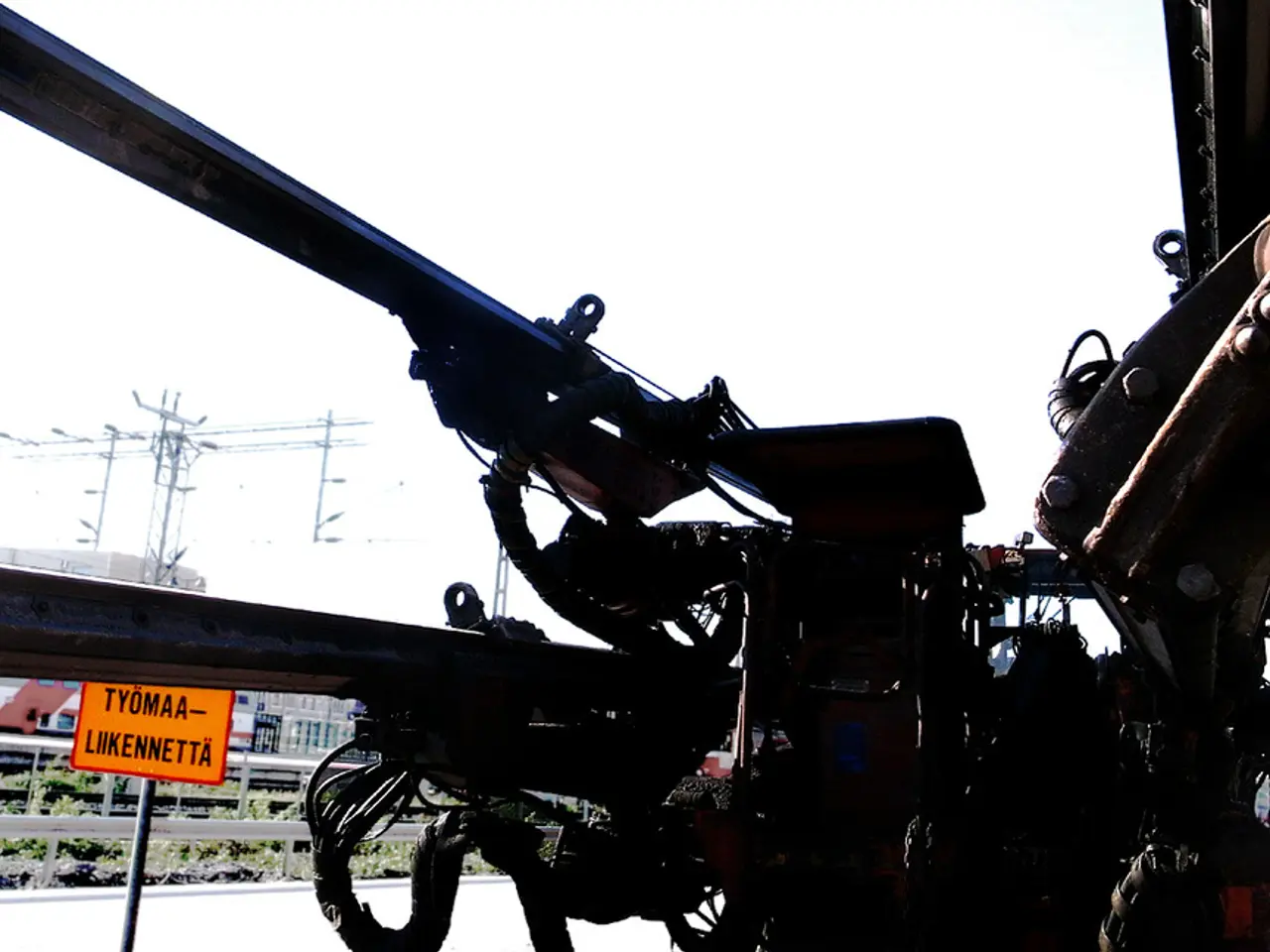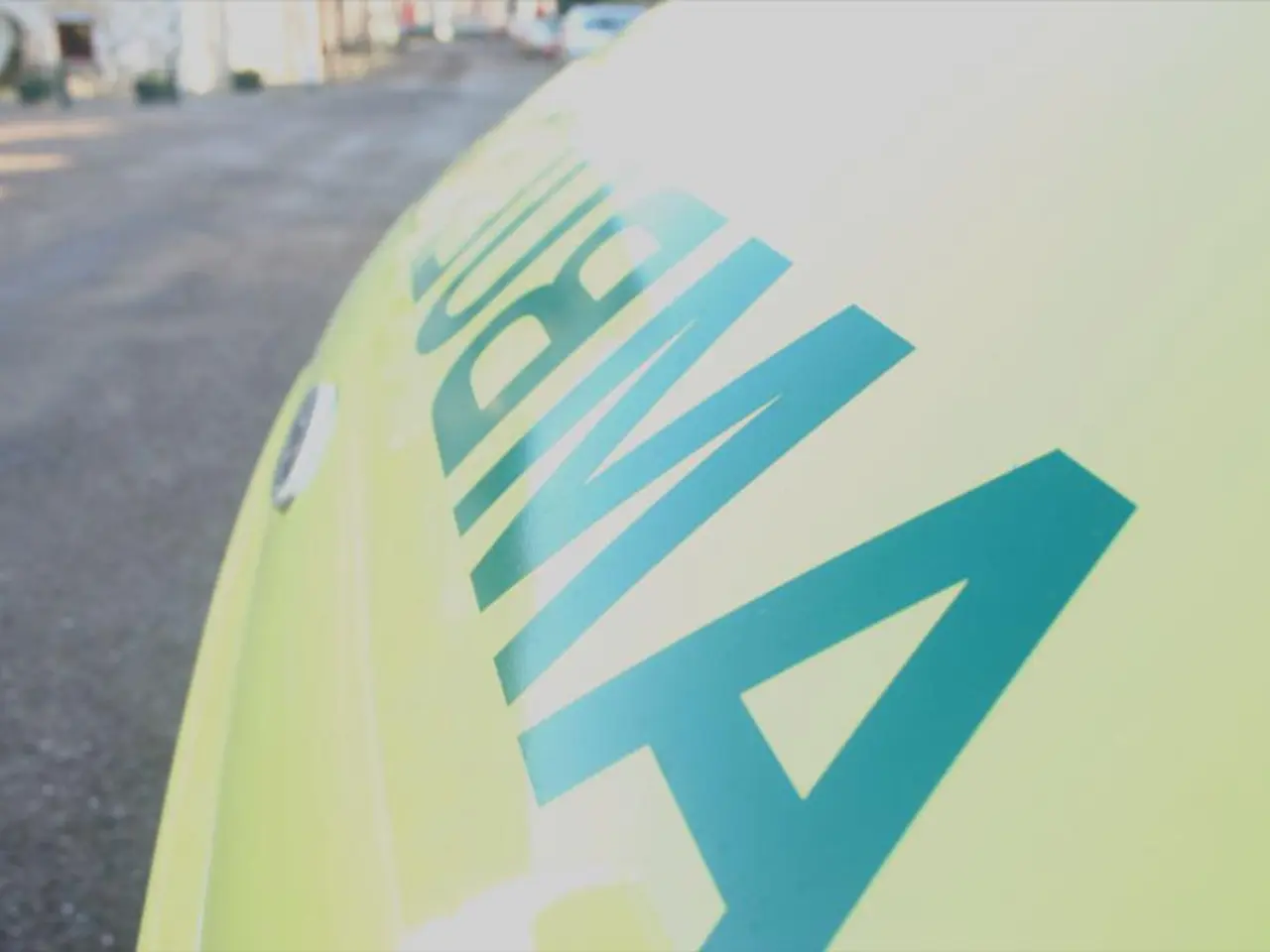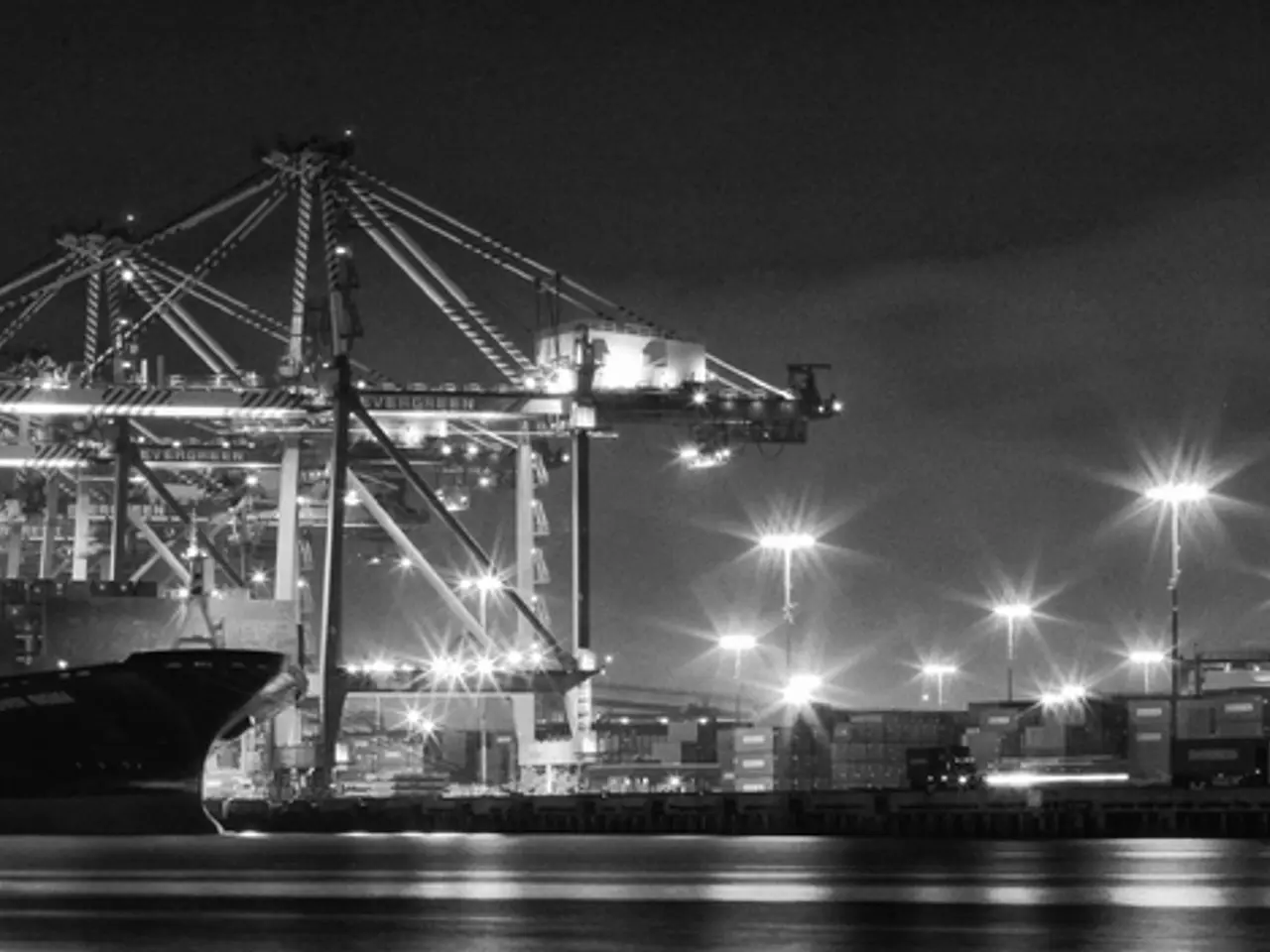New Concrete Press Capabilities Explored, Discussing Its Potential and Limits in Applications
=================================================================================================
In a groundbreaking move for the construction industry, the Instatiq P1 mobile 3D printer has been employed in a residential project in Metzingen, Germany, to print load-bearing walls directly on-site using normal concrete. This innovative technology, which causes around 20% less CO2 emissions compared to conventional masonry, is set to transform the way we build homes.
The Instatiq P1 printer, which boasts a 26-meter-long mast jib, applies concrete layer by layer to create walls up to three meters high and with a thickness of between 16.5 and 19 centimeters. The printer operates under a fully digital workflow, translating Building Information Modeling (BIM) digital building models into machine code for precise robotic printing on-site.
The Metzingen project, which includes a total of 44 units, is based entirely on a BIM model for seamless digital planning and implementation. The printing in Metzingen is done for a floor within a multi-story residential building, resulting in a hybrid construction method with lower floors built in the classical way and the top one printed.
The benefits of this innovative technology are numerous. The use of automated processes like the Instatiq P1 can significantly reduce construction times and resource usage. In the Metzingen project, the top floor of an apartment block was printed in just four days—a significant acceleration compared to traditional methods.
The printer's precision and efficiency also contribute to resource savings. Eliminating formwork reduces material waste and manual labor associated with traditional casting. The printer uses concrete precisely based on digital planning, minimizing overuse.
In terms of sustainability, the system reduces CO2 emissions by optimizing concrete use and enabling the application of CO2-reduced concrete mixes. The printer operates electrically (125A electric connection or vehicle power take-off), eliminating fuel-based emissions during printing operations.
The Instatiq P1 system is also designed to address the increasing shortage of qualified personnel in the construction industry. By providing better working conditions with less dust, noise, and more predictable workflows, it aims to attract and retain a skilled workforce.
The project in Metzingen is just the beginning. Züblin and Instatiq are planning to bundle their cooperation in a joint venture named Nelcon, offering services around 3D concrete printing (subject to antitrust approval). The goal is to develop a scalable process suitable for various building types, locations, and requirements, aiming for industrial application, not a gimmick.
In the long term, recycled materials are planned to be used in the 3D printing process, reducing the ecological footprint and saving costs. This innovative technology is indeed set to revolutionize the construction industry, offering faster, more sustainable, and more efficient construction methods.
[1] Hochwarth, D. (2022). Additive Manufacturing and Concrete Construction: The Instatiq P1 3D Concrete Printing Process in Metzingen. VDI Verlag. [2] Instatiq. (2022). Instatiq P1 3D Concrete Printing in Metzingen: Rapid Construction of Multi-Story Residential Walls. Retrieved from https://www.instatiq.com/news/instatiq-p1-3d-concrete-printing-in-metzingen-rapid-construction-of-multi-story-residential-walls [3] Züblin. (2022). Züblin and Instatiq Announce Joint Venture for 3D Concrete Printing. Retrieved from https://www.zueblin.de/en/news/zueblin-and-instatiq-announce-joint-venture-for-3d-concrete-printing [4] BIM World. (2022). Instatiq P1 3D Concrete Printing: A Game Changer in Construction Industry. Retrieved from https://www.bimworld.net/en/news/instatiq-p1-3d-concrete-printing-a-game-changer-in-construction-industry [5] Construction Europe. (2022). Instatiq P1 3D Concrete Printing: The Future of Construction. Retrieved from https://www.constructioneurope.info/en/news/instatiq-p1-3d-concrete-printing-the-future-of-construction
The innovative technology employed in the Metzingen project, known as the Instatiq P1 mobile 3D printer, brings a significant shift in the construction industry due to its ability to print energy-efficient walls. This technology, when integrated with Building Information Modeling (BIM), is poised to transform the industry by increasing efficiency and reducing energy consumption in the construction process.




